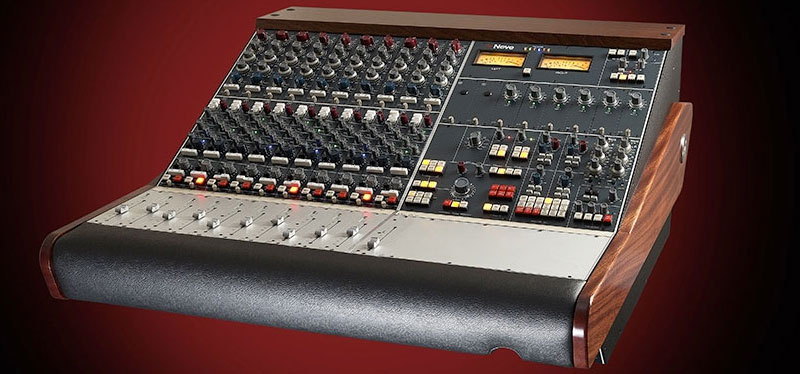Small Desks – Neve
When I was a young child, my grandmother took me to the Halifax Odeon to see a movie called ‘The Incredible Shrinking Man’. I remember it clearly for two reasons; firstly, it was one of the first films I ever saw, and secondly it left me curious as to my stuffy American granny’s taste in movies (and many other things in life). But that’s for another day…
The plot revolved around a guy who sailed his yacht through a radioactive cloud and awoke the next day to find he was several inches shorter – I guess the clue was in the title as they say. As the days went on, he continued to shrink until in the final scenes he was reduced to battling spiders with a hatpin the size of a pikestaff. It all seemed quite logical to my six-year-old eyes, and far from giving rise to arachnophobia or a dread of radioactivity, it put me off going to the movies with relatives; I was bored rather than frightened out of my childhood wits.
The modern recording industry reminds me of that film. Having cut my recording teeth in the wide open spaces of Rockfield and other sprawling studios in the 1970s and 1980s, I now inhabit an industry that more often than not defines a studio as a spare room or a rented rabbit hutch in a converted warehouse. Now, I’m no Luddite – far from it. I’ve always welcomed technological changes that bring the means of production within the reach of the masses, and today’s equipment is both more affordable and compact that the gear I grew up with. Indeed, today’s producer suite’s and home studios are capable of excellent professional results in the right hands, but there are implications, not least of which is the move from recording live bands to tracking one instrument or voice at a time. Another implication of smaller control rooms is the need for smaller and more compact equipment, particularly when it comes to recording consoles.
Many engineers and producers want to base their rigs around a console, for a number of reasons;
- A small console offers an ‘all in one’ solution, with good quality mic preamps, decent eq, compressors (sometimes) aux sends (for setting up foldback/cue sends to musicians when tracking), talkback, monitor select and inserts for using their analogue processing gear.
- It is highly cost-effective.
- It provides an excellent centrepiece for the studio, with all important facilities in easy reach
- It gives the studio a professional feel and appearance
- Invariably a high quality used desk offers superb value for money when compared with a comparable selection of mic preamps, eq etc.
We’ve already examined a selection of modern small format desks made by companies such as API and SSL. However, it is hardly surprising that demand for top quality used small format desks is currently growing by the month. Those most in demand include;
NEVE Classic small (and large)
Neve desks from the 1970s have trebled in price in recent years and are becoming extremely hard to find. If money is no problem, then these consoles offer a superb sound, even though some facilities may be basic. However, I often worry that certain dealers and chatrooms have ‘hyped’ classic Neves to the point where buyers mortgage their house in the belief they’re buying the holy grail only to be disappointed with the resulting purchase, for one of two reasons; either the desk they buy is on poor shape (NEVER buy from a broker unless you’re prepared to invest heavily in refurbishing) or the sonic footprint is unsuitable for the kind of music the buyer is producing.
Having said that, I’ve always been lucky enough to own classic Neves in my own studios and they remain my favourite boards. Here’s a basic run down of small Neve consoles.
Neve KELSO
A basic discrete broadcast desk from the late 1960s, thousands of these ‘budget’ desks were made. The mic preamps are exceptional class A and very similar to the classic 1073, but eq is simple two band hi/lo shelving. With two auxiliaries and NO DIRECT OUTPUTS (unless modified with transformers), simple metering and centre section functions, the Kelso is best regarded for it’s mic pres. But the lack of direct outputs seriously limits usefulness. These are currently overpriced and overhyped.
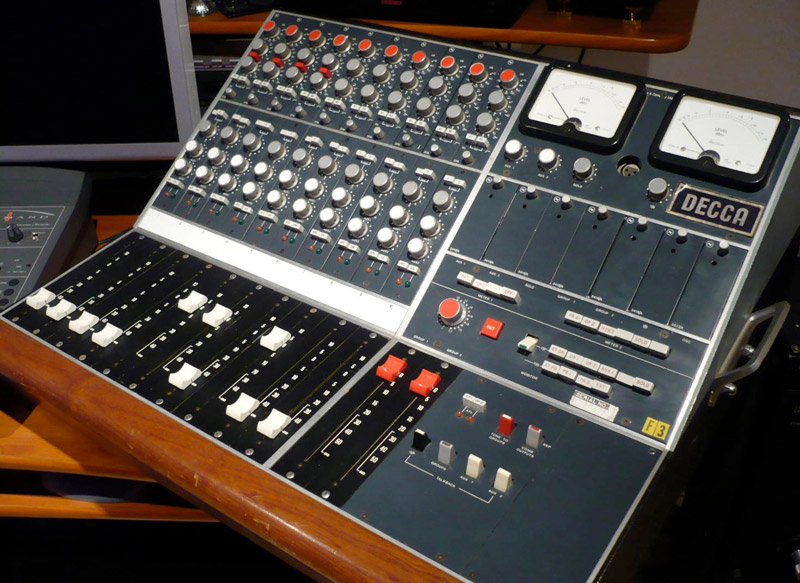
Neve MELBOURNE
These beautiful small discrete 12 channel desks were designed to accept the 33114 and/or 33115 mic pre/eq modules, perhaps my favourite Neve modules. Class A/B rather than Class A (as in the legendary 80 series larger format desks), the 33114/5 have the same mic preamps as the 1081 and comprehensive three band eq, making them punchier than a 1073 and so ideal for drums, and more modern music with raunchier dynamics. Although limited to two aux’s (which is fine for tracking and sidecar mixing), the Melbourne has inserts and direct outputs plus decent centre section facilities. All in all, an incredibly desirable small desk but my oh my, the price has gone berserk in recent years.
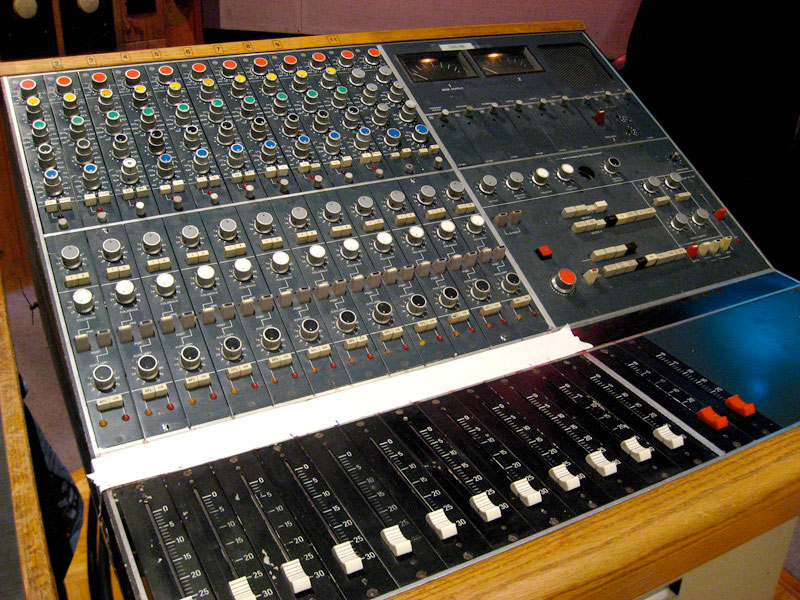
Neve BCM10
This more than any other, is the small desk that has been ‘hyped’ by US dealers in recent years. Sure, they’re lovely small desks but come on – as with the API 1608, there’s a BIG question why a ten channel desk loaded with 1066 or 1073 mic pre/eq should go for four to five times the component cost. But it does. Again, my advice is that unless you’re Taylor Swift looking to dump some royalties or you find one cheap, think very carefully about investing in a piece of gear that in my opinion is currently overhyped and will come down in value in coming years. Yes, I’d have one in the flicker of a heartbeat if the price made sense, but not at £60,000 + as some US dealers are now demanding (five years ago, one would have cost £18k-£23k…do the sums…10 x decent 1073 reissues would cost around £20k, add the cost of a rack, a decent summing mixer or even a small mixer such as the Studers examined below and you’ll get pretty much the same sound, but not the snob-value, at less than half the price. Are you looking to record or impress the neighbours? Don’t answer that…)
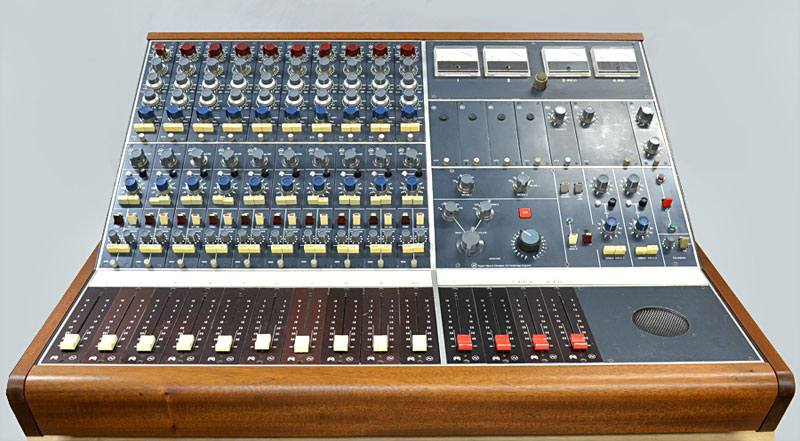
Neve 54 series
In the early 1980s Neve produced a compact broadcast desk called the 54 series. Available in eight portable (usually 8) or desktop (8 or 12 but sometimes larger) these were budget consoles designed largely for OB use. As opposed to the discrete (i.e. transistor based) 1970s desks detailed above, the 54 series were full of ICs (integrated circuits) and had limited headroom running off +/-15v – ‘headroom’ is the amount of level a circuit will accept before distorting; generally, the higher the voltage, the better the headroom). 54 series Neve desks have simple three band eq (cut and boost hi and lo plus switchable midrange) two auxiliaries, simple metering and centre section facilities and NO DIRECT OUTPUTS (we’ve seen lots of 54s where owners have tried to bodge a direct out from the channel faders, resulting in instability). Although the mic preamps are OK, I would personally urge potential buyers to check the desk out before committing hard –earned bucks on the basis of the Neve name. THESE ARE NOT CLASSIC DESKS and personally I believe there are far better sounding, more versatile desks around at cheaper prices.
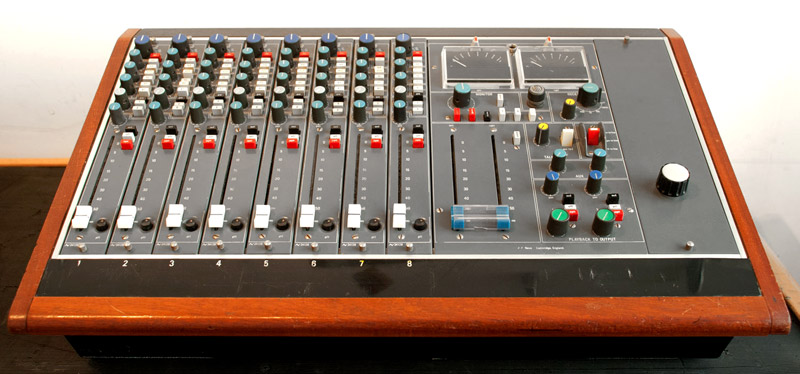
NEVE BCM10/2 Mk2
